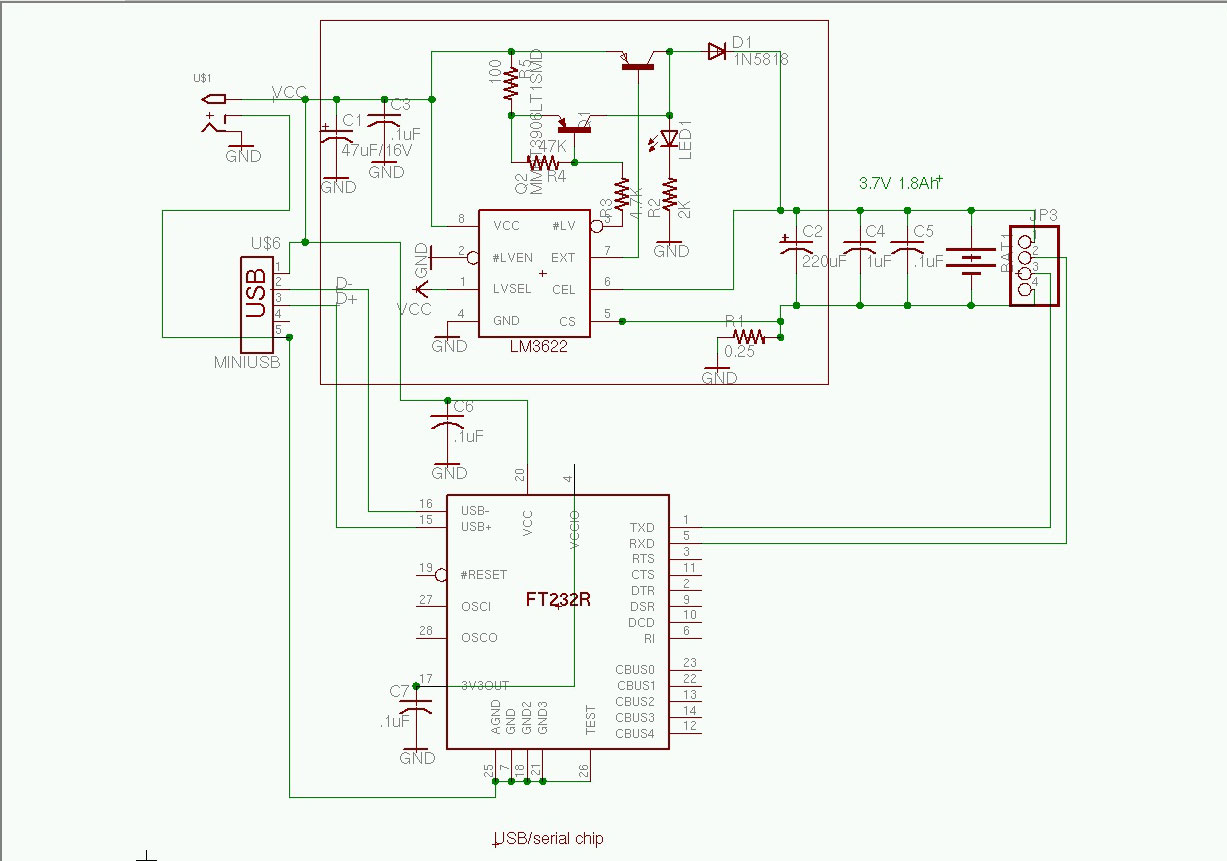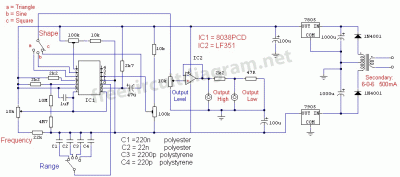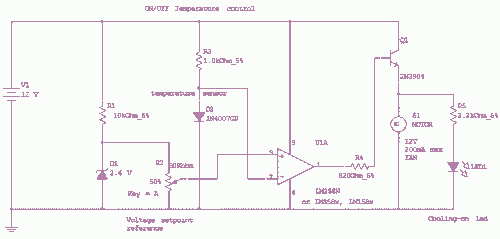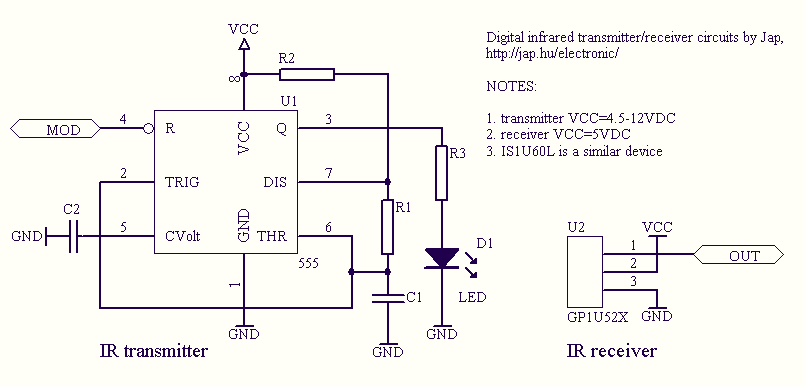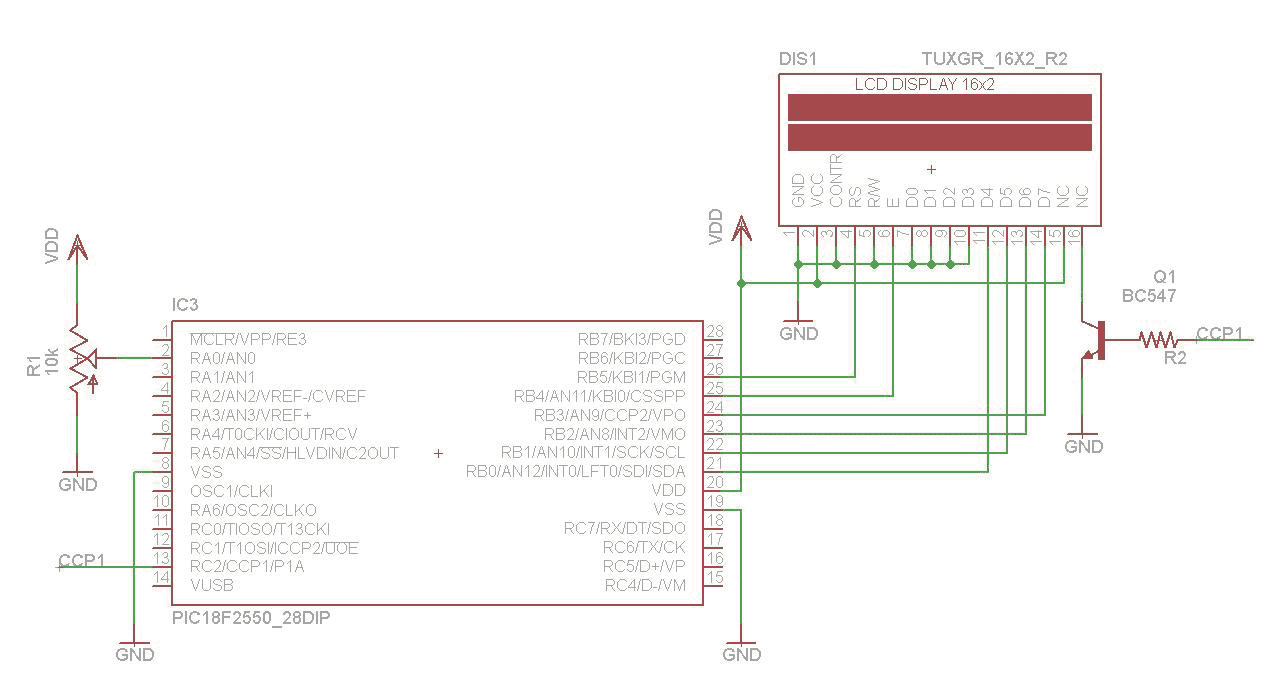
Simple TV Remote Control Jammer
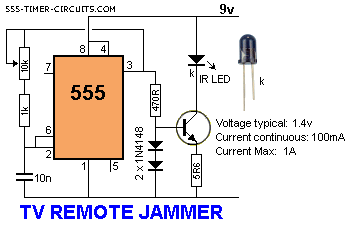
This circuit disrupts the infrared receiver in a television by generating a continuous signal that interferes with the remote control signals, preventing the TV from recognizing channel changes or other commands. This allows for uninterrupted viewing of a chosen program without the risk of someone changing the channel. The circuit is specifically tuned to emit a 38kHz signal. The infrared diode used in this circuit is referred to as an infrared transmitting diode or IR emitter diode, differentiating it from a receiving diode, which is known as an IR receiver or IR receiving diode. (A photodiode is categorized as a receiving diode.) There is a wide variety of IR emitters available, making it impractical to assign a single generic number to represent the type of diode used in this circuit. Examples of some IR emitter types include CY85G, LD271, CQY37N (45), INF3850, INF3880, and INF3940 (30). The current flowing through the IR LED is limited to 100mA through the use of two 1N4148 diodes, which, when combined with a transistor and a 5.6-ohm resistor, create a constant-current configuration.
The circuit operates by generating a 38kHz modulated infrared signal, which is the standard frequency used by many remote controls. The key component, the infrared emitter diode, is responsible for producing this signal. The choice of diode is flexible, as various IR emitters can be employed, provided they are capable of operating at the required frequency.
The circuit design includes a current-limiting feature facilitated by two 1N4148 diodes, which are arranged in such a way that they stabilize the current flowing through the IR LED. This is crucial for maintaining consistent performance and preventing damage to the diode due to excessive current. The transistor in the circuit acts as a switch, allowing for the control of the IR LED's operation based on the circuit's design requirements.
In addition, the 5.6-ohm resistor plays a vital role in setting the appropriate current level through the IR emitter, ensuring that it does not exceed the 100mA threshold. This careful design consideration helps to maintain the longevity and reliability of the components involved.
Overall, this circuit serves a specific purpose of jamming the infrared signals from remote controls, thereby providing a unique solution for uninterrupted viewing. It is essential to ensure that such a device is used responsibly, as it may interfere with the normal operation of other devices in proximity.This circuit confuses the infra-red receiver in a TV. It produces a constant signal that interferes with the signal from a remote control and prevents the TV detecting a channel-change or any other command. This allows you to watch your own program without anyone changing the channel ! The circuit is adjusted to produce a 38kHz signal. The IR dio de is called an Infra-red transmitting Diode or IR emitter diode to distinguish it from a receiving diode, called an IR receiver or IR receiving diode. (A Photo diode is a receiving diode). There are so many IR emitters that we cannot put a generic number on the circuit to represent the type of diode.
Some types include: CY85G, LD271, CQY37N (45 ), INF3850, INF3880, INF3940 (30 ). The current through the IR LED is limited to 100mA by the inclusion of the two 1N4148 diodes, as these form a constant-current arrangement when combined with the transistor and 5R6 resistor. Link 🔗 External reference
The circuit operates by generating a 38kHz modulated infrared signal, which is the standard frequency used by many remote controls. The key component, the infrared emitter diode, is responsible for producing this signal. The choice of diode is flexible, as various IR emitters can be employed, provided they are capable of operating at the required frequency.
The circuit design includes a current-limiting feature facilitated by two 1N4148 diodes, which are arranged in such a way that they stabilize the current flowing through the IR LED. This is crucial for maintaining consistent performance and preventing damage to the diode due to excessive current. The transistor in the circuit acts as a switch, allowing for the control of the IR LED's operation based on the circuit's design requirements.
In addition, the 5.6-ohm resistor plays a vital role in setting the appropriate current level through the IR emitter, ensuring that it does not exceed the 100mA threshold. This careful design consideration helps to maintain the longevity and reliability of the components involved.
Overall, this circuit serves a specific purpose of jamming the infrared signals from remote controls, thereby providing a unique solution for uninterrupted viewing. It is essential to ensure that such a device is used responsibly, as it may interfere with the normal operation of other devices in proximity.This circuit confuses the infra-red receiver in a TV. It produces a constant signal that interferes with the signal from a remote control and prevents the TV detecting a channel-change or any other command. This allows you to watch your own program without anyone changing the channel ! The circuit is adjusted to produce a 38kHz signal. The IR dio de is called an Infra-red transmitting Diode or IR emitter diode to distinguish it from a receiving diode, called an IR receiver or IR receiving diode. (A Photo diode is a receiving diode). There are so many IR emitters that we cannot put a generic number on the circuit to represent the type of diode.
Some types include: CY85G, LD271, CQY37N (45 ), INF3850, INF3880, INF3940 (30 ). The current through the IR LED is limited to 100mA by the inclusion of the two 1N4148 diodes, as these form a constant-current arrangement when combined with the transistor and 5R6 resistor. Link 🔗 External reference
